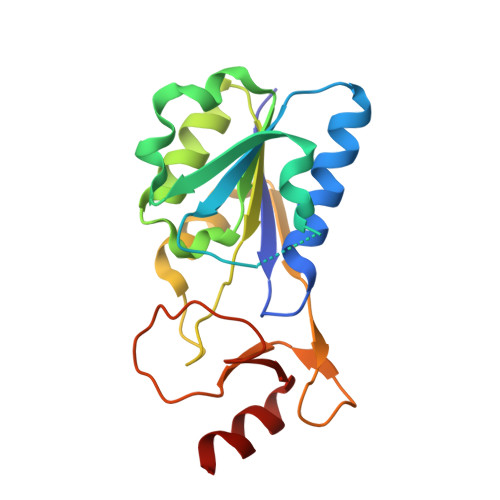Cell Cycle Regulation and Novel Structural Features of Thymidine Kinase, an Essential Enzyme in Trypanosoma Brucei.
Valente, M., Timm, J., Castillo-Acosta, V.M., Ruiz-Perez, L.M., Balzarini, T., Nettleship, J.E., Bird, L.E., Rada, H., Wilson, K.S., Gonzalez-Pacanowska, D.(2016) Mol Microbiol 102: 365
- PubMed: 27426054
- DOI: https://doi.org/10.1111/mmi.13467
- Primary Citation of Related Structures:
5FUV, 5FUW, 5FUX, 5FUY - PubMed Abstract:
Thymidine kinase (TK) is a key enzyme in the pyrimidine salvage pathway which catalyzes the transfer of the ¦Ã-phosphate of ATP to 2'-deoxythymidine (dThd) forming thymidine monophosphate (dTMP). Unlike other type II TKs, the Trypanosoma brucei enzyme (TbTK) is a tandem protein with two TK homolog domains of which only the C-terminal one is active. In this study, we establish that TbTK is essential for parasite viability and cell cycle progression, independently of extracellular pyrimidine concentrations. We show that expression of TbTK is cell cycle regulated and that depletion of TbTK leads to strongly diminished dTTP pools and DNA damage indicating intracellular dThd to be an essential intermediate metabolite for the synthesis of thymine-derived nucleotides. In addition, we report the X-ray structure of the catalytically active domain of TbTK in complex with dThd and dTMP at resolutions up to 2.2 ?. In spite of the high conservation of the active site residues, the structures reveal a widened active site cavity near the nucleobase moiety compared to the human enzyme. Our findings strongly support TbTK as a crucial enzyme in dTTP homeostasis and identify structural differences within the active site that could be exploited in the process of rational drug design.
Organizational Affiliation:
Instituto de Parasitolog¨ªa y Biomedicina "L¨®pez-Neyra", Consejo Superior de Investigaciones Cient¨ªficas, Granada, Spain.


















